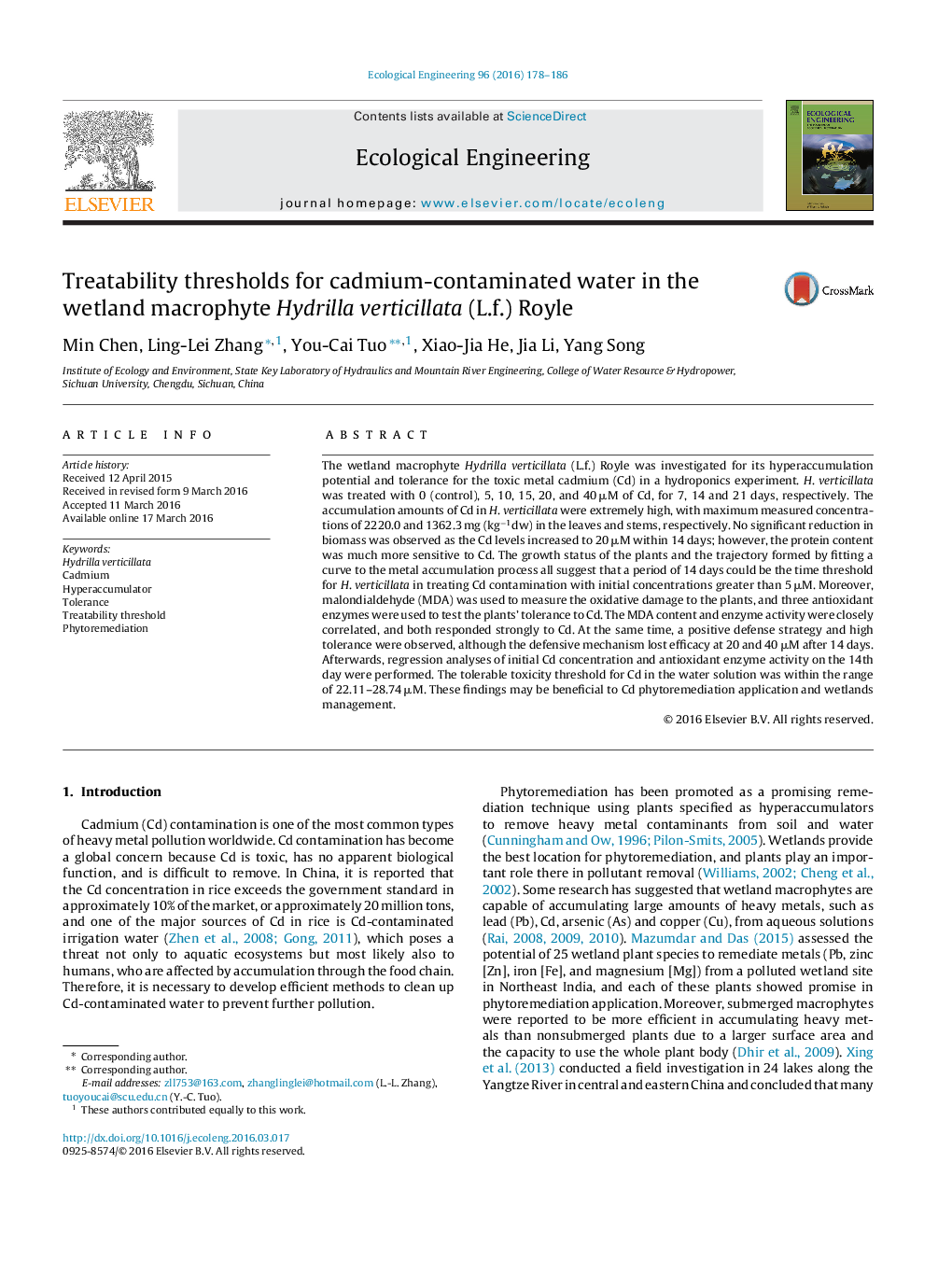| Article ID | Journal | Published Year | Pages | File Type |
|---|---|---|---|---|
| 5744100 | Ecological Engineering | 2016 | 9 Pages |
â¢Hydrilla verticillata showed a high potential for Cd accumulation.â¢A tolerance strategy of H. verticillata involved activated efficiency under Cd stress.â¢The Cd accumulation amount peaked near the 14th day for most treatment groups.â¢The Cd tolerance threshold for H. verticillata is suggested to be 22.11-28.74 μM.
The wetland macrophyte Hydrilla verticillata (L.f.) Royle was investigated for its hyperaccumulation potential and tolerance for the toxic metal cadmium (Cd) in a hydroponics experiment. H. verticillata was treated with 0 (control), 5, 10, 15, 20, and 40 μM of Cd, for 7, 14 and 21 days, respectively. The accumulation amounts of Cd in H. verticillata were extremely high, with maximum measured concentrations of 2220.0 and 1362.3 mg (kgâ1dw) in the leaves and stems, respectively. No significant reduction in biomass was observed as the Cd levels increased to 20 μM within 14 days; however, the protein content was much more sensitive to Cd. The growth status of the plants and the trajectory formed by fitting a curve to the metal accumulation process all suggest that a period of 14 days could be the time threshold for H. verticillata in treating Cd contamination with initial concentrations greater than 5 μM. Moreover, malondialdehyde (MDA) was used to measure the oxidative damage to the plants, and three antioxidant enzymes were used to test the plants' tolerance to Cd. The MDA content and enzyme activity were closely correlated, and both responded strongly to Cd. At the same time, a positive defense strategy and high tolerance were observed, although the defensive mechanism lost efficacy at 20 and 40 μM after 14 days. Afterwards, regression analyses of initial Cd concentration and antioxidant enzyme activity on the 14th day were performed. The tolerable toxicity threshold for Cd in the water solution was within the range of 22.11-28.74 μM. These findings may be beneficial to Cd phytoremediation application and wetlands management.
